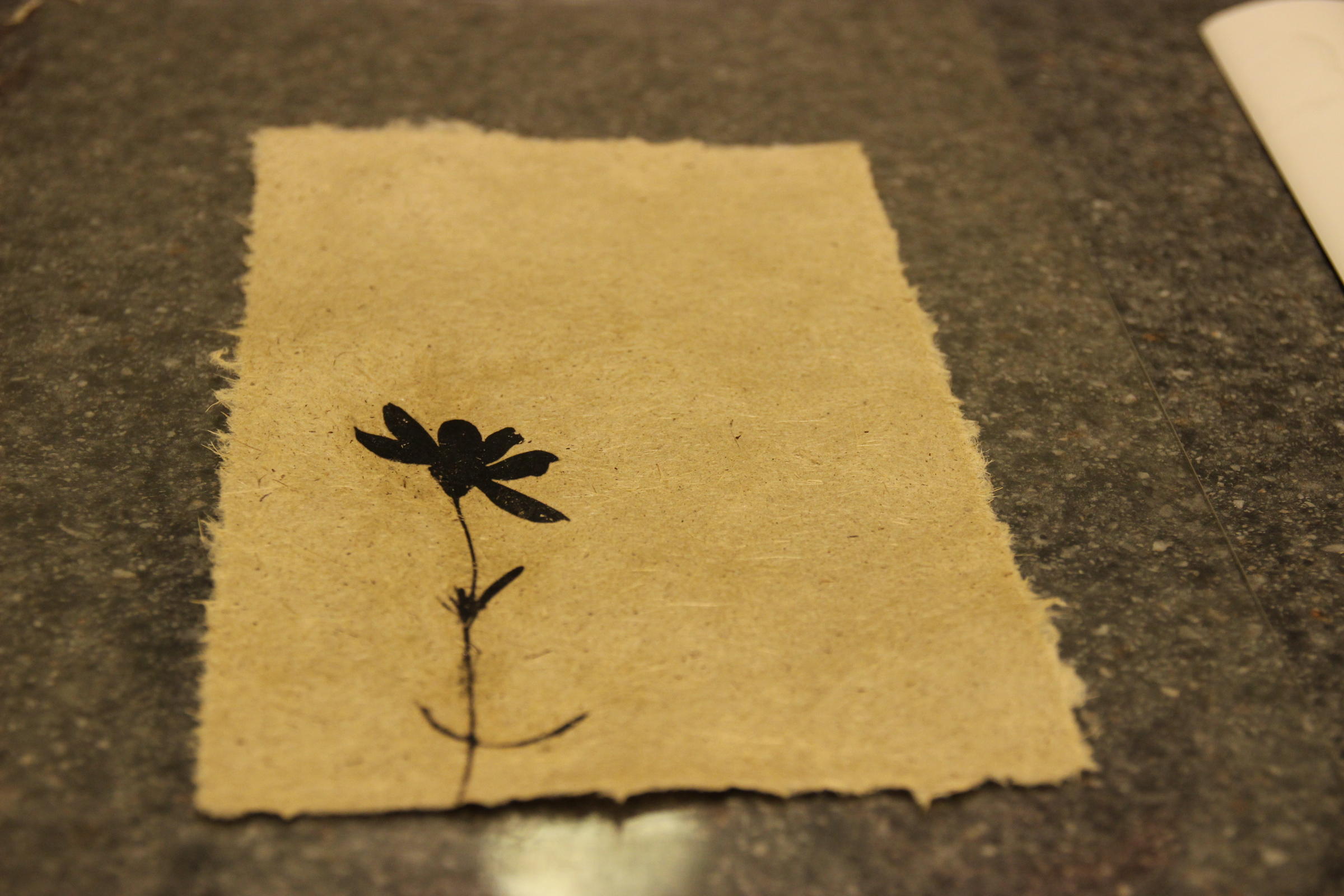Plants usually don’t get as much love as cute animals, and sometimes it’s hard to get people fired up about an endangered plant. But Jane Kramer’s trying to do that anyway.
Kramer is a fine art photographer who takes photos of the shadows of rare or threatened plants, and then prints those shadows on paper she makes out of invasive plants like garlic mustard and purple loosestrife.
“We’re going to put in our kayaks just off this little park,” Kramer says while letting me tag along on a recent shoot on Kent Lake in southeast Michigan. “There are a few patches of American lotus, which is what we’re going to photograph the shadow of.”
LISTEN: Turning Invasive Species into Art
We paddle up to a patch of American lotus and spot its huge yellow petals sticking up out of the water. My job is to hold a white foam board behind the flower and keep it very, very still.
Kramer says she’s drawn to things that are fragile or easily overlooked—and have an element of secrecy.
“The location of some of these plants is kept secret because of poachers. They’re afraid of people coming in and either taking the plants or taking the seeds,” she says.
After she takes these rare plants’ photos, she tackles the flip side of the project: making the paper from the invasives that threaten them.
Later, when I show up at her house, she’s cooking chopped garlic mustard on a stove in her garage. We then go to Kramer’s laundry room, where she rinses the cooked plants and puts them in the blender. “It’s kind of like making a really disgusting smoothie,” she says, laughing. (She’s broken a couple parts of her blender trying to chop up a type of reed known as phragmites.)

Garlic mustard is one of the invasive plants Kramer uses to make paper. Photo: Rebecca Williams / Michigan Radio
“Now we come to the most stressful part of the whole project,” she says. A lot of things can go wrong in this final phase: transferring the image onto the paper.
Kramer prints the shadow images on special transfer films. She has a magic ingredient to get the shadow photos onto the invasive plant paper: hand sanitizer. The alcohol releases the ink from the transfer paper. She squirts hand sanitizer onto the paper, spreads it across the page and then lays the transfer film down on top of it.
“You carefully lift up. You’ll see that not all the ink came off, but I really like how that looks,” she says.
“The paper is made from an invasive plant; the shadow is an endangered plant,” Kramer says. “And I’m trying to get these two together, in a print, and that is complicated. It kind of mimics that relationship in nature—how they’re kind of battling it out.”
###
This story comes from our partners at Michigan Radio's Environment Report, a program exploring the relationship between the natural world and the everyday lives of people in Michigan. If you’re in Michigan, you can see some of Kramer’s work at ArtPrize in Grand Rapids, September 21 through October 6.



